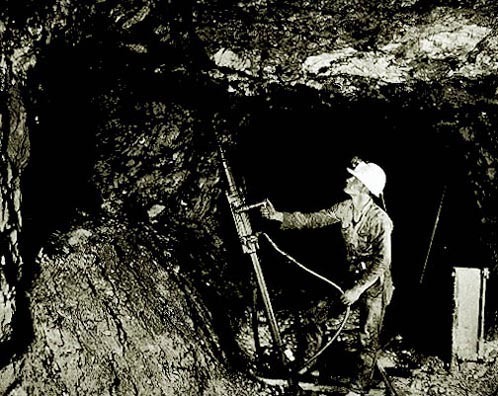Lead Heads and a Toxic Timebomb: The Bunker Hill Superfund Site

Silver mining in the Coeur d'Alene River Basin contaminated the area, which now constitutes the second largest EPA superfund site in the US.
The Coeur d’Alene River Basin in Idaho has earned its nickname as “The Silver Valley.” Since the late 19th century over 140 million tons of ore have been mined and processed from the surrounding mountains, including silver, zinc, and lead. Mine waste was often dumped directly into the Coeur d’Alene River, which in turn flows into the scenic Coeur d’Alene Lake and eventually into the Spokane River in Washington. The effects of contamination stretch about 166 miles, creating the nation’s second largest superfund site in 1983, and introducing complex problems to diverse groups of people in the basin.
Though many companies have mined in the valley, the biggest contributor to the pollution was the Bunker Hill Company. Though attitudes toward pollution differed greatly in the 1930s from views today, the terrible effects of waste disposal from the Bunker Hill mine were already indisputable. One local paper reported in 1934 that just 20 years prior to the Coeur d’Alene River measured 60 feet deep in one section, but now was reduced to a depth of just two feet because “it has been filled up with mine slimes” and has led to a “concerning number of dead fish and lead” in the river. Some measures were taken to curb pollution then, but it wasn’t until the nationwide environmental movement began in the 1960s and 1970s that regulations were enacted. Towns where much of the ore was processed, namely Kellogg and Smelterville, are the easiest to identify the negative effects of the dumping.
“You had the taste of metal in your teeth,” one resident remembers from growing up in Kellogg. An initial study conducted by the Idaho state government found that 99% of children living in Smelterville had over 40 micrograms of lead in their blood per deciliter, when just 5 micrograms is already a serious cause for concern. Such high levels of lead are responsible for the increase in health problems among residents, mental illnesses like schizophrenia and attention deficit hyperactivity disorder. Some residents claim that the lead poisoning has created a stigma in the surrounding towns that the townspeople of Kellogg are crazy. “They call us ‘lead heads,’” remarked one former miner. Though the more prosperous people of nearby cities like Coeur d’Alene may look down on Kellogg and Smelterville, they must deal with their own effects of this environmental tragedy.
Lake Coeur d’Alene has long drawn visitors with its beautiful mountain vistas and scenic forests, but few tourists know that the lake is a repository for 75 million tons of sediment contaminated by lead, zinc, and arsenic. For now, the dangerous metals are trapped at the bottom of the lake and can’t harm those who enjoy it’s waters, though this is subject to change. Both modern forms of pollution and suggested treatment options can decrease the amount of oxygen in the lake, which would allow the metals to rise and create a toxic mess that “in other places, has shut down water supplies and caused fish die-offs.” Because of the scale of the problem, a proper clean-up is projected to take many years, however; the process has already been delayed and muddled many times because of the number of parties involved. The EPA is often at odds with the state government, which itself must deal with the conflicting opinions of local activist groups. On top of that the local Native American tribe, the Coeur d’Alene, have continuously fought to earn decision making power when it comes to protecting and cleaning the lake they have relied on for centuries. The lake was incorporated into the Bunker Hill superfund site in 2002, but the complexity of issues in the entire basin make it clear that the EPA is unequipped to effectively deal with the damage done to this beautiful area.
Despite all the unresolved problems, the Trump administration has repeatedly expressed interest in reopening mining operations at Bunker Hill, even giving one company a permit in 2018. The possibility of the Bunker Hill mine operating again creates even more divides in the surrounding communities, and could only worsen the already precarious environmental situation in the Coeur d’Alene River Basin.
Images



